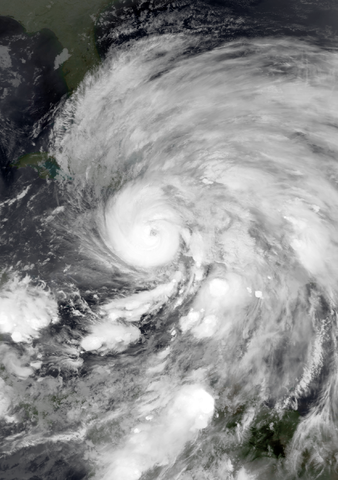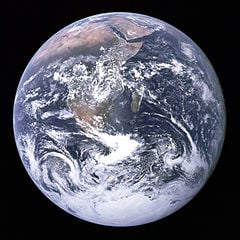It is the middle of December, already. 2018 is just around the corner. Can you believe it?!
For some of what transpired this year really the roots can be traced back to last. It began in earnest in August, on Aug. 16, 2016 to be exact, with the announcement made by the U.S. Environmental Protection Agency (EPA) that it and the National Highway Traffic Safety Administration had teamed up to finalize, as the EPA expressed, “standards for medium- and heavy-duty vehicles that will improve fuel efficiency and cut carbon pollution, while bolstering energy security and spurring manufacturing innovation. The final phase two standards were called for by President Obama’s Climate Action Plan, and respond to the President’s directive in early 2014 to develop new standards that run into the next decade.” The model years of vehicles designated to receive the aforementioned improvements are 2021 to 2027, inclusive. (There is much more on this here).
Meanwhile, it wasn’t long thereafter that as it has to do with 2016, transportation-sector emissions in America overtook energy-sector emissions for the first time since 1978.
Though, it may not be what you think. It wasn’t so much that transport emissions were experiencing leaps-and-bounds growth (though they were still climbing yet not at what I would call “accelerated levels,” the growth was modest), it was more a case of the energy sector more and more turning to renewables and less and less relying on the burning of fossil fuels to generate electricity and heat. (As a slight aside, this was all going on around the same time that then President Barack Obama set the country on a trajectory to not only stem the rise in greenhouse gases released but make it a national objective to reduce our GHGs to a level of between 26 and 28 percent below what was present in 2005 by 2025). All things considered and from where I sit, to say these were very promising times emissions-reduction-wise, indeed they were!
On 2017’s doorstep
As we all know, Donald Trump and Mike Pence were elected as President and Vice President of the United States, respectively, and sworn into office in Jan. 2017. Election promises made while on the campaign trail ran the gamut.
Among the ones we heard from now-President Trump during that time and related to the environment from what I recollect, were withdrawing from the Paris Climate Accord, both rolling back motor vehicle fuel-efficiency standards and the Clean Power Plan, as well as his intent to see to it that construction would once again resume on the Keystone XL Pipeline.
And, for the record, we can’t say we didn’t see this coming. To lend credence, on Aug. 19, 2016 in the Air Quality Matters blogpost: “At work: Global Warming Solutions Act – coming up on 10 years,” I offered, “[K]eep in mind this is an election year, and depending upon who wins the race for the presidency, this could very well be a barometer of how environmental protection will fare in the years ahead, i.e., whether there will be continued improvement or whether all or part of the positive work already done will be undone.”
Some successes, some setbacks
The newest national ozone health standard of 70 parts per billion (ppb), strengthened from 75 ppb (the revised standard being more protective of human health), was approved Oct. 1, 2015. However, subsequent to standard approval the time to implement was deemed to be too long, apparently. In response, on July 12, 2017 a lawsuit was filed with the D.C. Circuit Court against the EPA.
As for that delay, the Court was asked both by environmental and public health organizations to block or strike it down. That proved to be unnecessary as “[t]he EPA’s withdrawal of the delay came the evening before its response to the lawsuit was due,” Earthjustice expressed in an Aug. 2, 2017 press release.
Air-wise, the big story in 2017 is probably the rise, not the reduction, in worldwide greenhouse gas (GHG) emissions. Driving the increase apparently is coal-fired power plants continued coal burning in China. This news could not come at a worse time considering the decision by the Trump administration to back out of the Paris Climate Accord.
Along with this the average concentration of carbon dioxide in the air is now 403.3 parts per million parts of air.
In October, meanwhile, The Lancet Commission on Pollution and Health released a published report highlighting pollution as one of the leading contributors to deaths across the planet – nearly one-in-six had a connection to pollution. Of an estimated total nine million pollution-caused deaths worldwide in 2015, the one linked to the early deaths of an estimated 6.5 million people across the globe, is pollution in the atmosphere, the most connected with any of the pollution types.
Let us also not forget that the air quality issues having the biggest impacts were disasters-related: Fires, hurricanes and storms in general. I kept hearing the term “atmospheric river” over and over and over again. There was even fallout created because of the solar eclipse – masses of people driving to locations just so they could get a good view of the celestial phenomenon. Wildfires sweeping across both northern California in October and in the southern state in December prompted forced evacuations. Anytime this happens, besides the smoke and ash produced from the fires directly, mass exoduses via vehicles from affected areas and communities, add to the pollution in the air already there. In the case of Hurricane Harvey hitting the Texas Gulf Coast region, a fire erupting at a chemical plant in the Houston, Texas area, didn’t help matters.
Food for thought
All of which begs the question: Are the disasters we’re seeing an outgrowth of a planet warming?

Image above: NASA
– Alan Kandel

From my reading about the early effects of the changes going on in our atmosphere due to carbon dioxide and methanol release, we are already at the point of no return and may easily expect out climate conditions to continue to become hotter and more extreme. This unstable situation is now unstoppable and the US and China have no serious intention in leading the race to stop this deprivation!
In these circumstances it seems that we have no hope left and we might just a well enjoy the heat-wasting world, backed by coal and oil fires, forest destruction, and incomplete combustion, where at least we can all get a nice warm homestead and enjoy some industrial exaggeration of cheap produce in iron, fresh meat, and cheap automobiles and costly transport, where individually cars weigh more than 75% of their maximum capacity, etc. and gladly pass away these last few years, eventually of famine–letting the future get to a stage where all life on earth becomes unbearable again (after Noah and the Ark). We can then agree that once again God made another mistake and that another cycle of life on this planet is all that He now is planning. So start building the equivalent of the Ark and pray for rain.